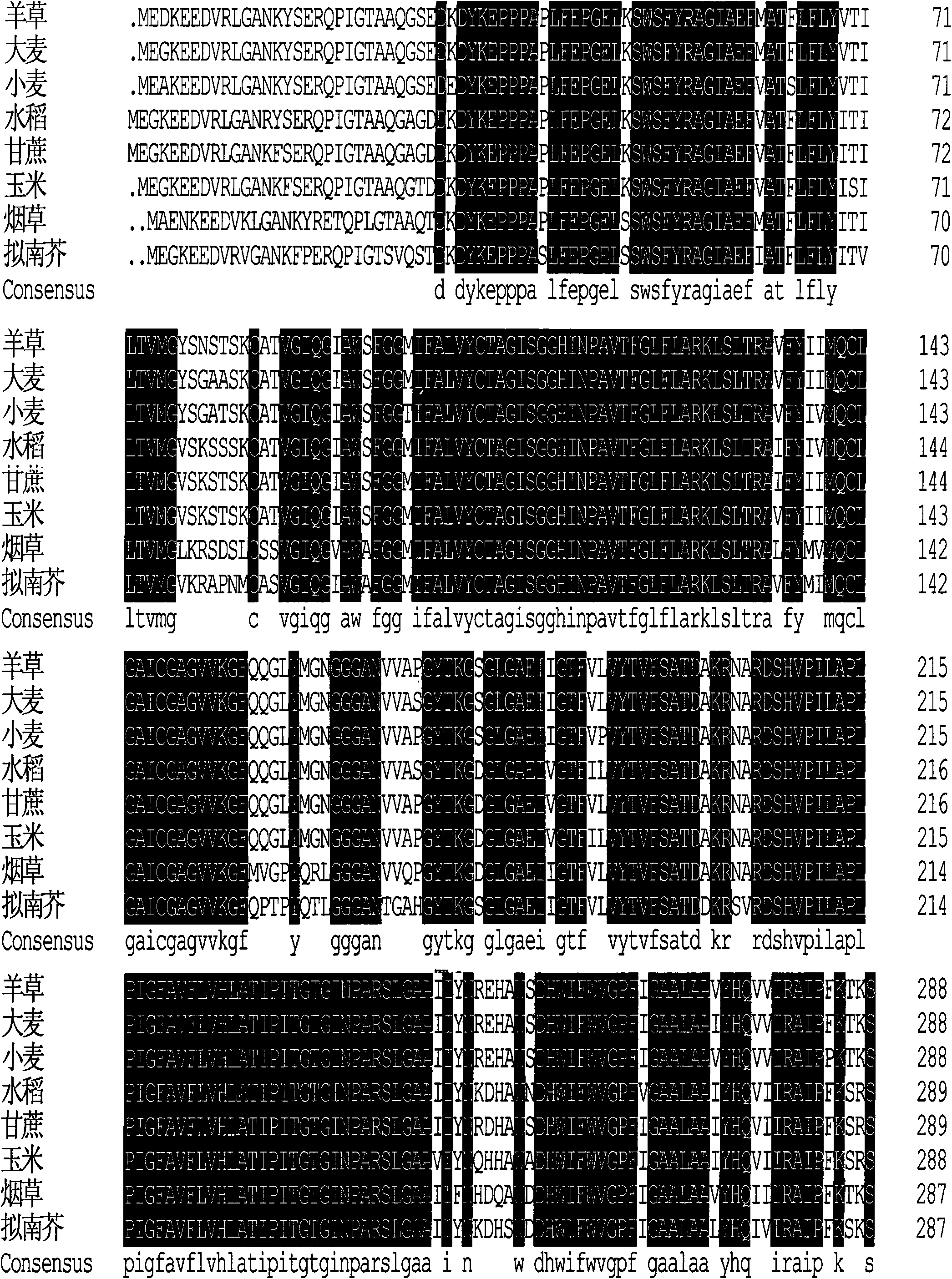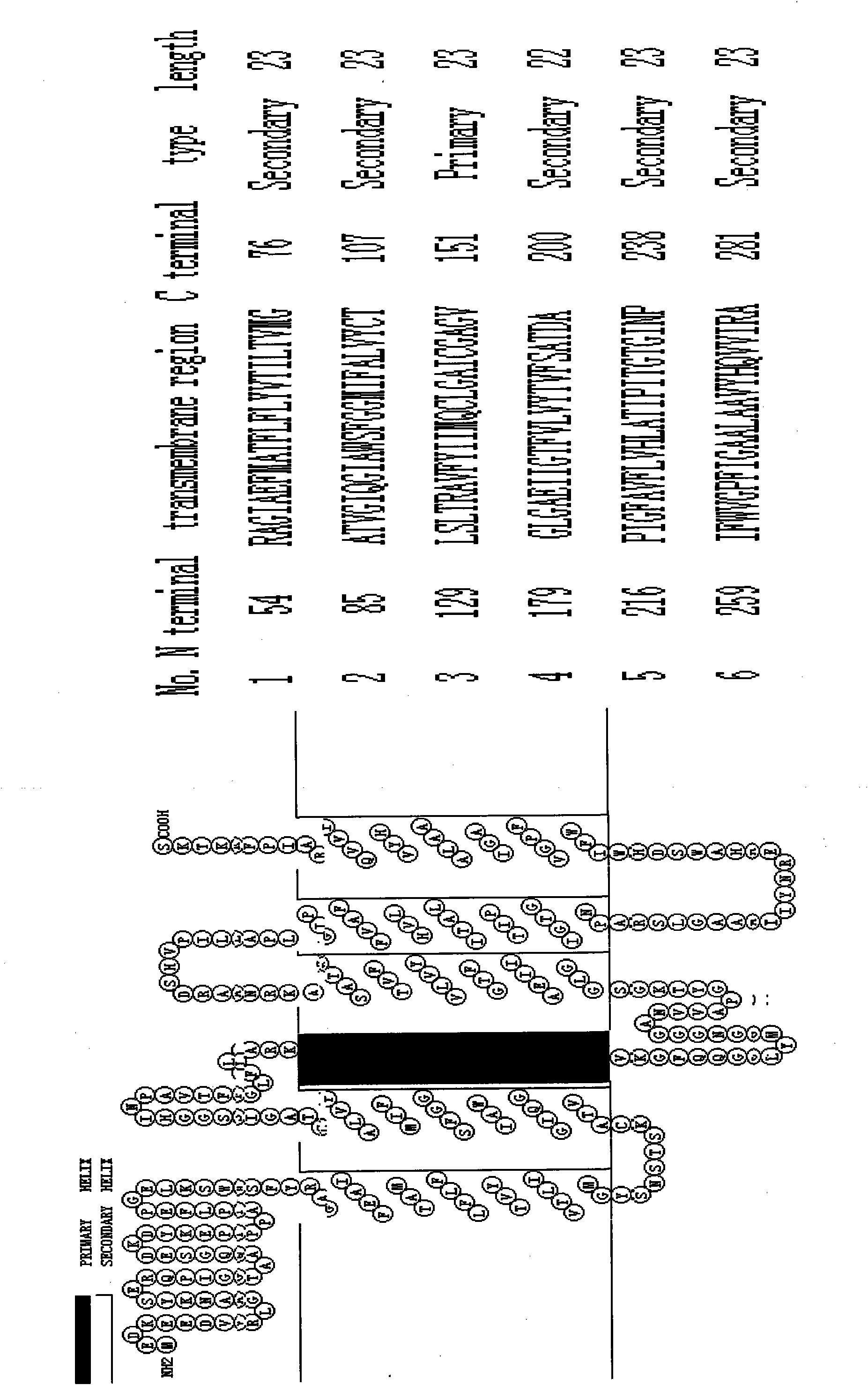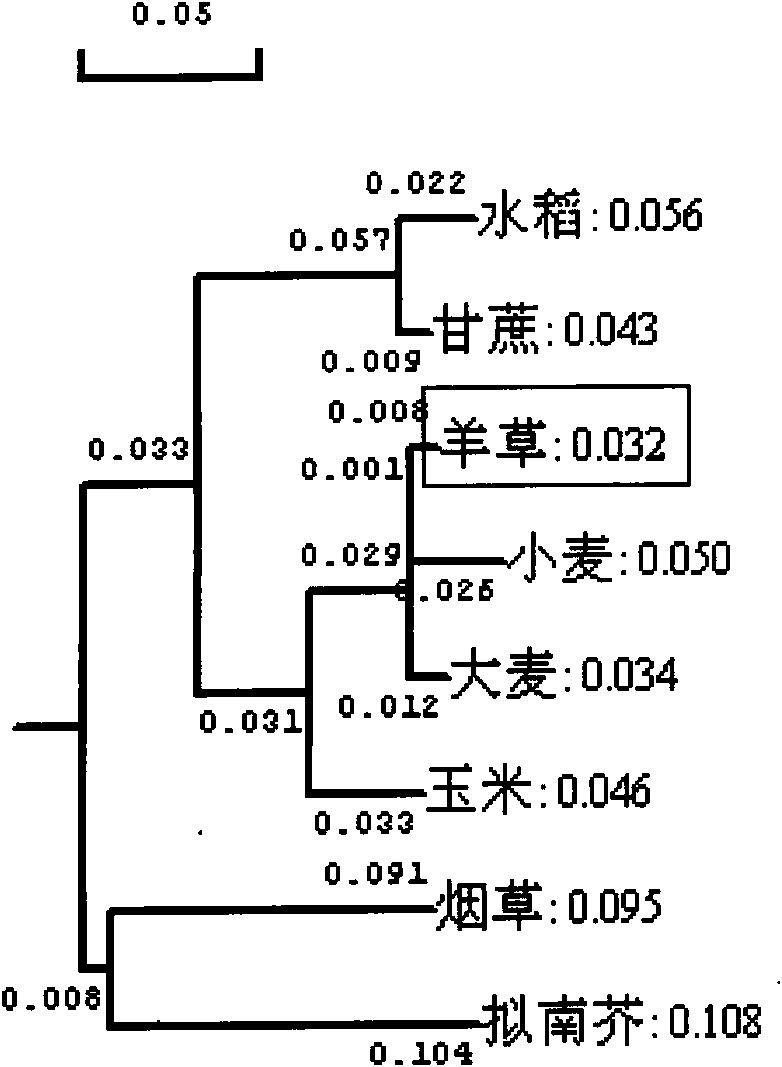Leymus chinensis aquaporin and encoding gene and application thereof
An aquaporin and Leymus chinensis technology, applied in the fields of application, genetic engineering, plant genetic improvement, etc., can solve problems such as rare reports in molecular biology research, and achieve the effects of improving plant varieties, maintaining water balance, and enhancing drought resistance.
- Summary
- Abstract
- Description
- Claims
- Application Information
AI Technical Summary
Problems solved by technology
Method used
Image
Examples
Embodiment 1
[0044] Cloning of Aquaporin LcPIP1 Gene of Leymus chinensis
[0045] 1. Extraction of total RNA:
[0046]When the Leymus chinensis seedlings grew to the 3-leaf stage, they were subjected to rhizosphere stress with 20% PEG6000, and the leaves were cut after 3 hours, ground into powder with liquid nitrogen, and total RNA was extracted with RNAiso Reagent (TaKaRa).
[0047] 2. Cloning of full-length cDNA of Leymus chinensis aquaporin LcPIP1 gene:
[0048] (1) Synthesis of the first strand of cDNA
[0049] The first strand of cDNA was obtained by reverse transcription with Invitrogen's SuperScriptTM First-Strand Synthesis System for RT-PCR kit. The reaction system is as follows, cDNA Synthesis Mix: 5×cDNA Synthesis Buffer 4μl, 0.1M DTT 1μl, DEPC-treated Water 1μl, RNaseOUT (40U / μl) 1μl, ThermoScript RT (15U / μl) 1μl, total volume 8μl. Mix on ice: RNA 5 μl (<5 μg), Primer Oligo (dT) 20 (50 μM) 1 μl, dNTPs (10 mM) 2 μl, DEPC-treated Water 4 μl, total volume 12 μl. Put the RNA+Pri...
Embodiment 2
[0067] LcPIP1 Gene Sequence Analysis
[0068] The full-length cDNA of Leymus chinensis aquaporin gene is 1116bp, including an open reading frame (Open Reading Frame, ORF) with a length of 867bp from position 9 to position 875 of the 5' end, and a 5' untranslated region (NonTranslated region) of 8 bases. Region, NTR) and the 3' untranslated region of 241 bases, as shown in the sequence listing SEQ ID No: 2. This cDNA encodes a polypeptide consisting of 288 amino acids, such as SEQ ID No: 1 in the sequence listing, with a predicted molecular weight of 30.8KD.
[0069] Using DNAMAN4.0 to compare the amino acid sequences of different aquaporins, the amino acid sequence of LcPIP1 has high homology with other aquaporins that have been cloned (such as figure 1 shown), the GenBank accession numbers of the aquaporins of each species in the figure are: barley (BAF41978), wheat (ABI96812), rice (NP_001047672), corn (AA086706), sugarcane (ACC59097), tobacco (BAA20076) , Arabidopsis (BAA...
Embodiment 3
[0071] Construction of LcPIP1 Gene Plant Expression Vector
[0072] The pBIN437 plasmid was digested with BamHI and KpnI, and the vector was recovered; at the same time, the LcPIP1 gene was connected to the pMD18-T vector, named pT-LcPIP1, pT-LcPIP1 was digested with BamHI and KpnI, and a small fragment of about 0.9 kb was recovered , the vector was connected with the 0.9kb target fragment with T4DNAligase, transformed into DH5α and identified by PCR and enzyme digestion to obtain the expression vector pBPIP1 (such as Figure 4 shown). The promoter of this expression vector is 35S, the terminator is Tnos, and the selection marker gene is NPT Ⅱ.
PUM
 Login to View More
Login to View More Abstract
Description
Claims
Application Information
 Login to View More
Login to View More - R&D
- Intellectual Property
- Life Sciences
- Materials
- Tech Scout
- Unparalleled Data Quality
- Higher Quality Content
- 60% Fewer Hallucinations
Browse by: Latest US Patents, China's latest patents, Technical Efficacy Thesaurus, Application Domain, Technology Topic, Popular Technical Reports.
© 2025 PatSnap. All rights reserved.Legal|Privacy policy|Modern Slavery Act Transparency Statement|Sitemap|About US| Contact US: help@patsnap.com



